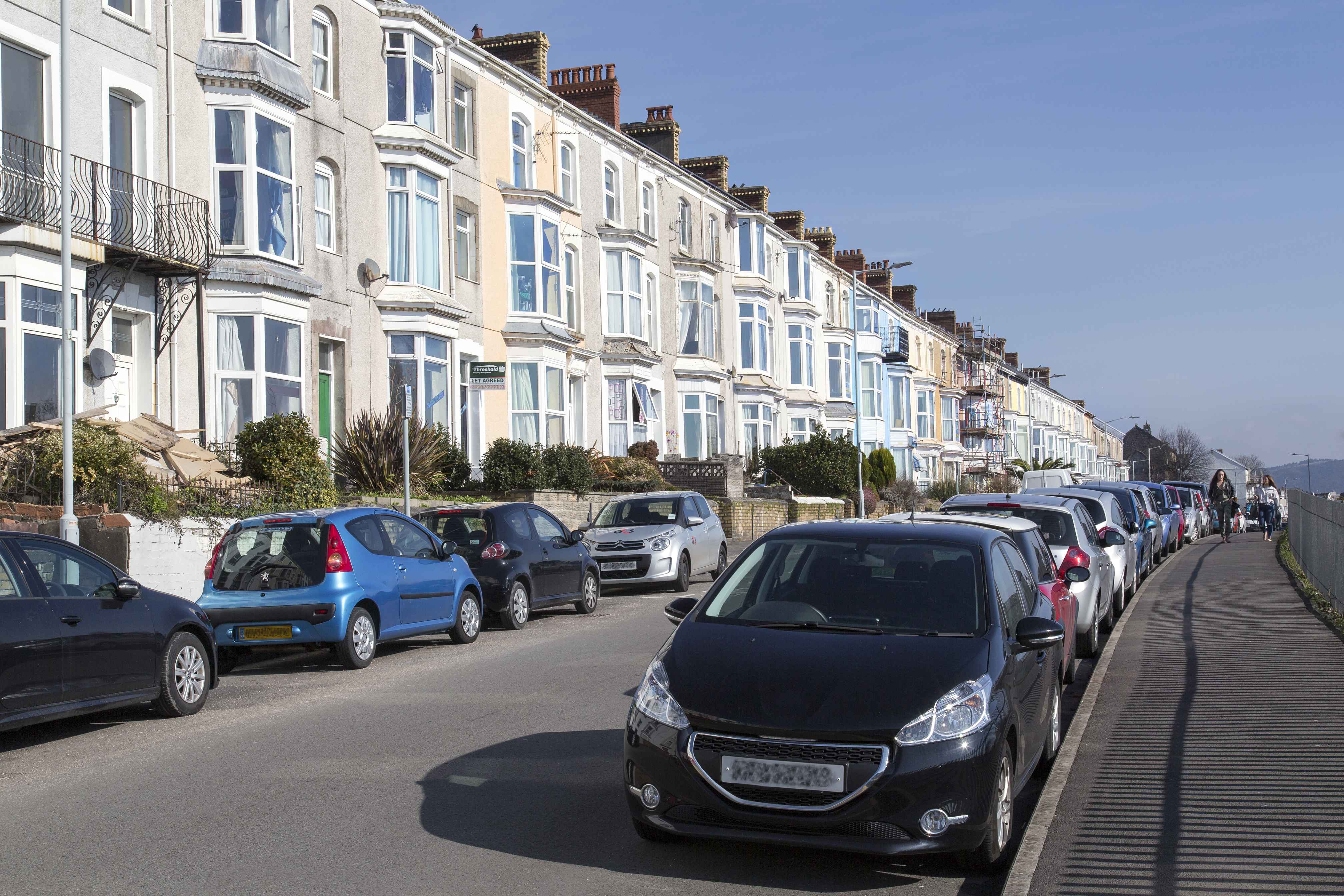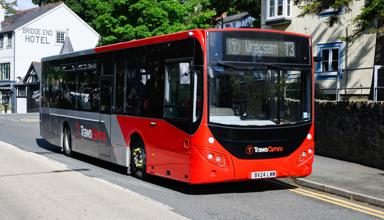On 17 September the statutory speed limit on Welsh restricted roads – those with a system of streetlights no more than 200 yards apart – reduced from 30mph to 20mph.
While 20mph is widely used across the UK, this is the first national scheme.
It’s fair to say the policy has generated a response. The biggest petition by some way in Senedd history opposes the change and is still gathering signatures.
This is the second of two articles article considering issues we’re frequently being asked about in Senedd Research.
This article looks at enforcement and monitoring. The first looked at implementation and effectiveness.
How is enforcement operating?
In August, the Deputy Minister for Climate Change, Lee Waters MS, made clear that “the new 20mph default speed limit will be enforced, with excessive speeders being fined”.
However, he also said that, in the early stages at least as people get used to the change, the focus will be on education and engagement not punishment.
Additional funding has been provided to the GoSafe casualty reduction partnership to support roadside engagement to educate speeding drivers by police working with fire service road safety teams (as opposed to fire fighters).
The partnership, which comprises the 22 Welsh councils, the Welsh Government and the four Welsh police forces, is responsible for speed enforcement, as well as education and work on engineering solutions like traffic calming measures.
GoSafe has published information on the enforcement approach for the 20mph roll out on its website. This includes information on the enforcement site selection approach, and the sites themselves.
National Police Chiefs’ Council guidelines set a tolerance for speed limit enforcement of 10% plus 2mph – or 24mph in a 20mph limit. GoSafe says it has permission to increase this to 26mph (i.e. 10% plus 4mph) while the public adapts.
Will this make money for Welsh public bodies?
No. Despite some suggestions to the contrary, the speed limit change will not raise revenue for the police or the Welsh Government.
Money raised from speeding fines is returned directly to the Treasury in Westminster rather than being retained by any bodies in Wales.
Are cyclists affected by the speed change?
No. There are a number of offences which can be applied to pedal bikes, such as dangerous cycling, careless or inconsiderate cycling and cycling when under influence of drink or drugs.
However, section 81 of the Road Traffic Regulation Act 1984, which sets the speed limit of restricted roads, makes clear that the limit applies to “motor vehicles”. Bicycles do not fall within the legal definition of “motor vehicles”.
More generally, rule 124 of the Highway Code sets out various speed limits, making clear they are for motor vehicles.
Electric bikes are subject to other restrictions. To be road legal they must have a motor with a maximum power output of 250 watts which shouldn’t be able to propel the bike faster than 15.5mph.
It’s worth noting that while local authorities can limit speeds for bikes using byelaws, road traffic offences are reserved to Westminster.
The Welsh Government and Senedd cannot legislate to introduce new road traffic offences.
Will we need a Welsh highway code?
The Highway Code is the responsibility of the UK Government. In August, the Deputy Minister responded to a written question on this issue to say:
Following discussions with the UK Government’s Department for Transport, the Highway Code will reflect the change to 20mph as the default speed limit on restricted roads in Wales.
The report of the 20mph task force, which considered the change in 2020, included draft changes to the Highway Code, which it considered necessary should the 20mph limit change go ahead (listed at appendix E, see page 42). It suggests that only a few sections of the Code would need to be updated. It seems unlikely, therefore, that a separate edition for Wales would be issued. The task force report suggested the existing edition be updated to include specific references to Wales where needed.
On a slightly different note, the RAC has warned drivers to be aware that it may take some time for sat nav systems to be updated with the new speed limits. This issue has been flagged more generally across the UK in 20mph areas.
How will the 20mph policy be monitored and evaluated?
 The first (phase 1) monitoring report on the eight pilot areas implemented since June 2021 was published in March. This describes:
The first (phase 1) monitoring report on the eight pilot areas implemented since June 2021 was published in March. This describes:
- “large positive” changes in relation to speed reduction Key Performance Indicators (KPIs) and attitudes to active travel;
- a “slight positive” change in vehicle / pedestrian yield behaviour; and
- “no discernible change” in local air quality and “slight negative” changes in vehicle journey times.
Other KPIs, like CO2 emissions, pedestrian / cyclist casualty rates and public attitude changes, weren’t covered because of the pilots’ short timescales and limited geography. The next report on the pilots is due shortly.
Transport for Wales published a monitoring framework document for the national roll-out in September. This identifies the policy objectives and the indicators used. Data will be collected for up to five years post-implementation.
Assessment will be against a total of 12 KPIs (see section 2.2 and figure 2 in the monitoring framework). Primary and secondary data sources, collection methods and timescales are explained in section 3.5.
In terms of formal reporting timescales the framework says:
Transport for Wales will prepare an interim report on the initial effects of the national default 20mph speed limit on restricted roads based on data collected through to six months after implementation (October 2023 to March 2024). The report will be published in June 2024. A further report on the first full year of implementation will be published in December 2024. Formal reporting will then take place annually.
Will the economic impact be evaluated?
The economic impact of the switch to 20mph has been a subject of discussion, with critics of the policy pointing to estimated net costs of £4.5bn set out in the Explanatory Memorandum (EM) accompanying legislation implementing the change.
The EM estimates an economic cost totalling £6.4bn over 30 years from increased journey times. It explains:
This dis-benefit is split between households commuting and travelling for leisure activities (£4.7 bn) and potential productivity losses of persons travelling for business reasons (£1.6 bn) e.g. delivery drivers.
With economic benefits estimated to be around £1.9bn this gives a net “disbenefit” of £4.5bn.
The EM refers to the UK Government’s Green Book appraisal methodology. The Welsh Government FAQs on the policy say the methodology used in the EM is “now under academic debate for its effectiveness when calculating small delays”. The Deputy Minister told the Senedd:
… our analysis shows that individual journeys will, on average, be affected by one minute, and most journeys by less than two minutes. That's what the evaluation shows—very small and very hard to reliably monetise. But the Green Book requires us to add up every minute lost, to multiply it by 30, because this analysis has to cover a period of 30 years, and that's where this figure of a £4.5 billion impact on the economy comes from.
Neither the monitoring framework, nor the post implementation review set out in the EM, makes reference to any assessment of the economic costs and benefits of the new limit. This is perhaps not surprising, given the relatively short five-year monitoring period, which contrast with costs and benefits estimated over 30 years.
However, it’s unclear if any wider assessment of the impact of the policy, including assessment of economic impact, will be undertaken.
Article by Senedd Research, Welsh Parliament






